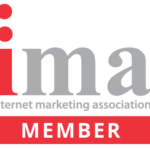
By The Opte Project – Originally from the English Wikipedia; description page is/was here., CC BY 2.5, https://commons.wikimedia.org/w/index.php?curid=1538544
=> An Internet portal will be most often a website that integrates information and resources uniformly.
Usually, each information source gets its dedicated area on the page for displaying information(a portlet);
which the user can configure which ones to display. The extent to which content is displayed uniformly is
depended on the user and the purposes, including the type of the content. The emphasis will be on a
certain descriptions for configuring and customizing the body of the content and the chosen
application and/or data used. In addition, the role of the user in a structure may
determine which content can be added to the portal or deleted from the portal configuration.
Apart from search engines features, web portals may offer other services such as email, news, information
from databases including entertainment content. Portals provide a way for memberships and organizations
to provide a relationship with access control and procedures for multiple applications and databases,
which otherwise would have been different web entities at various URL’s and sites The features available
may be restricted by whether access is by an authorized and authenticated user (employee, member)
or an anonymous site visitor (guess).
Web portals are sometimes classified as horizontal or vertical. A horizontal portal is used as a platform for
multiple companies commercial purposes. A vertical portal (also known as a “vortal”) is a specialized entry
point to a specific market or industry niche, subject area, or interest. Some vertical portals are known as
“vertical information portals” (VIPs). VIPs provide news, editorial content, digital publications, and e-
commerce capabilities. Vertical portals still provide dynamic multimedia applications including social
networking, video posting, and blogging.
A number of portals have come about which are specific to a particular domain, offering access to related
companies and services; a prime example of this trend would be the growth in property portals that give
access to services such as professional agents and lawyers that offer conveyancing. Along the same lines,
industry-specific the news and information portals have also appeared.
A captive portal is a landing page, presented by a Operator and shown to users before they gain broader
access to URL or internet services. Often used to present a landing or log-in page, the portal intercepts
an user and presents a landing or log-in page, the portal intercepts observed services., the portal
intercepts connection data until such time as the user is authorized to launch browser sessions.
Captive portals are mainly used in wireless open networks, where the users are shown a welcome
message informing them of the conditions of access (allowed ports, liability, etc.). Administrators tend to do
this so that their own users take responsibility for their actions and to avoid any major problems.
Captive portals are often used for marketing and commercial communication purposes. In order to do this,
access to Internet is done via WiFi as an incentive to exchange personal data that the user provides by
filling out a registration form. The online form either automatically opens in a device’s browser, or appears
when the user opens their browser and tries to visit a webpage. In other words, the user is “captive” –
unable to browse freely until they accept the terms and conditions, or see the displayed advertisements
that are shown in an email optin form or welcome page. This allows the provider of this service to display or
send advertisements to users who connect to the WiFi access point. This type of service is also sometimes
known as social media WiFi, as they may ask for a social network account to login (such as Facebook).
The user can find many forms of content in the captive portal, and it’s frequent to allow access to an
internet site in exchange for viewing content or performing a certain action (generally providing personal data to
enable commercial contact); thus, the marketing use of the captive portal is a tool for lead generation
(business contacts or potential clients).
The portals at The United Societies has two main social and commercial missions, integration
and presentation.
